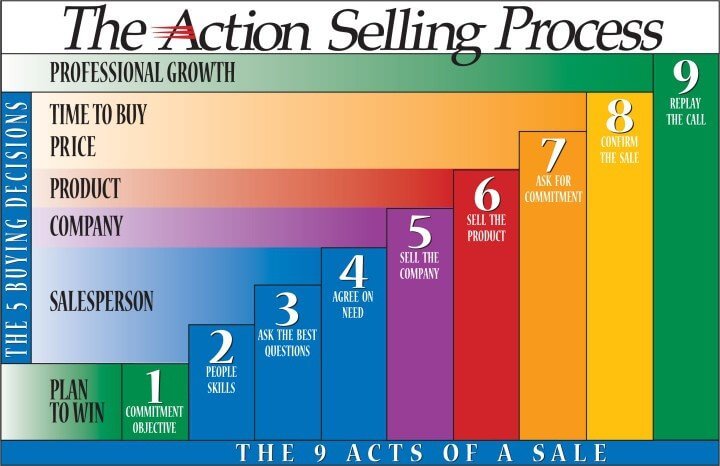When you invest in sales training, what would be the ideal return on your investment? Using various tips and techniques from sales training programs as tools to fix a particular gap in sales skills won’t give you much in the way of ROI. If what you’re after is a lasting improvement in your sales organization—one that translates into a better bottom line for your company—that’s a different kettle of fish.
The tips-and-techniques approach assumes that sales training (or sales coaching) is a project. If you want lasting improvement, you must treat sales training as a process. The difference is enormous.
Let me illustrate the difference this way. Here is a quote taken directly from the web site of one of my major competitors in the sales training business:
“Because we have over 200 modules of Library content in sales (negotiations, cross-selling, managing objections, coaching, etc.), we are not only able to customize quickly, but we are also able to provide you with proven, effective models, tips, techniques and best practices that will give you the behavior change and the results you desire.”
That sounds great, but it is fatally flawed. Tips and techniques relating to sales skills might give your salespeople something to use when certain situations arise, but they are always reactive: “If this happens, do that.” Well, what do you do if “this” doesn’t happen? Or, more importantly, how can you keep “this” from happening in the first place?
 Action Selling ® is such a systematic process. Remember the old saying about giving people a fish versus teaching them how to fish? Train your sales force in a proven sales process, and you will have a permanent, repeatable solution to every selling situation.
For information about how to improve sales skills and make sales training pay huge dividends, contact Action Selling ® at (800) 232-3485.
Action Selling ® is such a systematic process. Remember the old saying about giving people a fish versus teaching them how to fish? Train your sales force in a proven sales process, and you will have a permanent, repeatable solution to every selling situation.
For information about how to improve sales skills and make sales training pay huge dividends, contact Action Selling ® at (800) 232-3485.
‘If this happens, do that.’ But what if ‘this’ doesn’t happen?
There, in a nutshell, is the failure of the project-based approach to conducting sales training programs. A far better answer is to treat sales training as a process. How? By adopting sales training and sales coaching initiatives that are based on a logical and valid salessystem that allows you to anticipate these issues and deal with them inside the process. Action Selling ® is such a systematic process. Remember the old saying about giving people a fish versus teaching them how to fish? Train your sales force in a proven sales process, and you will have a permanent, repeatable solution to every selling situation.
For information about how to improve sales skills and make sales training pay huge dividends, contact Action Selling ® at (800) 232-3485.
Action Selling ® is such a systematic process. Remember the old saying about giving people a fish versus teaching them how to fish? Train your sales force in a proven sales process, and you will have a permanent, repeatable solution to every selling situation.
For information about how to improve sales skills and make sales training pay huge dividends, contact Action Selling ® at (800) 232-3485. 
